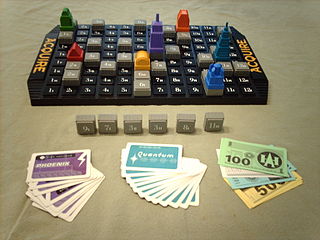
Acquire is a board game published by 3M in 1964 that involves multi-player mergers and acquisitions. It was one of the most popular games in the 3M Bookshelf games series published in the 1960s, and the only one still published in the United States.
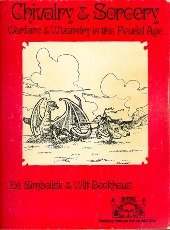
Chivalry & Sorcery is a fantasy role-playing game (FRP) first published in 1977 by Fantasy Games Unlimited. Created by Edward E. Simbalist and Wilf K. Backhaus in 1977, Chivalry & Sorcery (C&S) was an early competitor to Dungeons & Dragons (D&D). The designers of the game were dissatisfied with the lack of realism in D&D and created a gaming system derived from it, named Chevalier. They intended to present it to Gary Gygax at Gen Con in 1977 but changed their minds once at Gen Con once they met Scott Bizar who wrote out a letter of intent. After some changes eliminated the last remnants of D&D, Simbalist and Backhaus published the first edition of their game, now renamed Chivalry & Sorcery.

Richthofen's War, subtitled "The Air War 1916–1918", is a board wargame published by Avalon Hill in 1973 that simulates aerial combat during World War I.

PanzerBlitz is a tactical-scale board wargame published by Avalon Hill in 1970 that simulates armored combat set on the Eastern Front of World War II. The game, which was the most popular board wargame of the 1970s, is notable for being the first true board-based tactical-level, commercially available conflict simulation wargame. It also pioneered several concepts that would become industry standards.

En Garde! is a hybrid role-playing and tactical dueling game published by Game Designers' Workshop (GDW) in 1975 that simulates the swashbuckling world of the Three Musketeers and Cyrano de Bergerac in 17th century Paris.
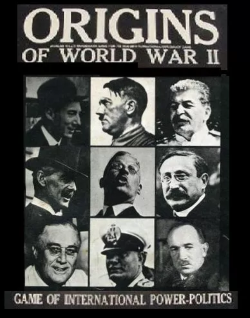
Origins of World War II is a board game published by Avalon Hill in 1971 that combines a wargame with international diplomacy to simulate the diplomatic conditions that led to the outbreak of World War II.
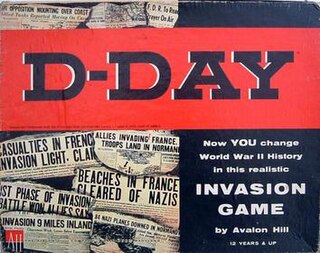
D-Day is a board wargame published by Avalon Hill in 1961 that simulates the six months of the European Campaign of World War II from the Normandy Invasion to the crossing of the Rhine. It was the first wargame to feature the now ubiquitous hex grid map and cardboard counters, and was revised and re-released in 1962, 1965, 1971, 1977 and 1991.
Sniper!, subtitled "House-to-House Fighting in World War II", is a two-player board wargame about man-to-man combat in urban environments during WWII, originally released in 1973 by Simulations Publications Inc. (SPI). After TSR purchased SPI in 1982, TSR released an expanded edition of Sniper! in 1986, and followed up that up with releases of various "companion games" and a videogame.

Melee is a board wargame designed by Steve Jackson, and released in 1977 by Metagaming Concepts. In 2019, Melee was revived and re-released by Steve Jackson Games.
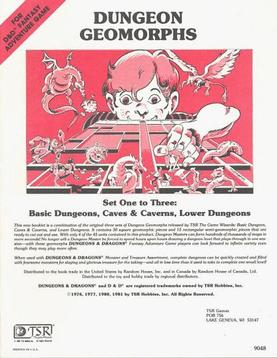
Dungeon Geomorphs is an accessory for the Dungeons & Dragons fantasy role-playing game.
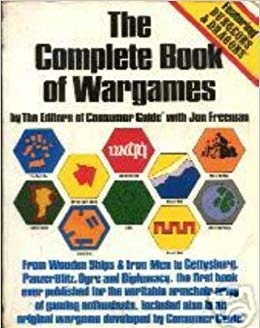
The Complete Book of Wargames by Jon Freeman and the editors of Consumer Guide was published in 1980 by Simon & Schuster under the Fireside imprint.

Monsters! Monsters! is a role-playing game first published by Metagaming Concepts in 1976.
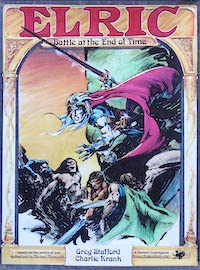
Elric: Battle at the End of Time is a board wargame published by Chaosium in 1982, an update of the 1977 game simply titled Elric. It is based on the Elric of Melniboné books by Michael Moorcock. There have been three English language editions, Elric (1977), Elric: Battle at the End of Time (1982), and Elric (1984), published by Avalon Hill.

4000 A.D. is a science fiction conquest board game published by Waddingtons in 1972.

Cities is a fantasy role-playing game supplement that was first published by Midkemia Press in 1979. The supplement was designed to be used with any role-playing game system, and provides information about using urban center as part of adventures. Midkemia published a second edition in 1980, Chaosium published a third edition in 1986, and Avalon Hill published a fourth edition in 1988 for the RuneQuest role-playing game. The various editions received positive reviews in game periodicals including The Space Gamer, Different Worlds, Dragon, White Dwarf, Casus Belli, and Games International.
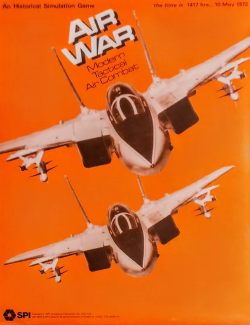
Air War, subtitled "Modern Tactical Air Combat", is a board wargame published by Simulations Publications, Inc. (SPI) in 1977.

High-Bid is a board game published in 1963 by 3M that simulates the buying and selling of items via auction. The game was acquired in the mid-1970s by Avalon Hill and re-published under two titles: The Collector and Auction.

Quebec 1759 is a board wargame published in 1972 by Gamma Two Games that simulates the Battle of the Plains of Abraham outside the walls of Quebec in 1759. The game uses wooden blocks set on their edge rather than the more traditional cardboard counters, unique for a wargame in 1972.

KampfPanzer: Armored Combat, 1937–40 is a board wargame published by Simulations Publications Inc. (SPI) in 1973 that simulates the first battles involving battle tanks.
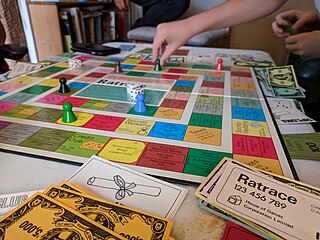
Ratrace is a family economic board game designed by Alfons Rubbens and published by Waddingtons in 1967. Described as "the madcap game of social climbing," players attempt to acquire status and cash in order to make their way from Working Class to High Society and become the wealthiest player by the end of the game.



















